Herrana Addisu is a multi-disciplinary artist, filmmaker, and social impact strategist whose work sits at the intersection of storytelling, advocacy, and cultural memory. Raised between Addis Ababa and the United States, Herrana’s upbringing and the migration journey of her family deeply inform her artistic lens and commitment to justice. With academic roots in political science, gender studies, and international law, Herrana began her career in human rights, working across anti-trafficking, labour rights, and global women’s movements. But it was through photography and film that she discovered a more intimate, visceral way to reach communities and bridge the gap between policy and lived experience.
Out of this vision came Chucha Studios, a creative production agency Herrana founded to centre the voices of marginalised communities and reimagine visual storytelling as a tool for systemic change. At Chucha, art and activism are inseparable. The studio partners with brands, artists, and grassroots organisations to tell stories that challenge dominant narratives, particularly around Black and immigrant identities, through casting, creative direction, event production, and strategic advocacy. Their process is rooted in restorative justice, with a focus on amplifying underrepresented voices through a community-led and deeply respectful approach to storytelling.
In our interview, Herrana shared the deeply personal roots of her work, from her early fascination with memory and resistance to the intimate experiences that shaped her debut film, The River ወንዙ. The film is an homage to Ethiopian girlhood, beauty, and the gendered risks tied to water access, inspired by Herrana’s own memories of a river near her childhood home.
We also discussed Welcome Home, Chucha’s first major series, which centres Black immigrant stories often overlooked in mainstream narratives. In blending archival photography with personal narrative, the series reclaims space for joy, strength, and resilience within the diasporic experience. Herrana’s intuitive approach to choosing stories, guided by memory, identity, and urgency, underscores her commitment to making work that is not only representative but resonant.
Whether she’s directing, modelling, or collaborating across disciplines, Herrana is forging a path that refuses to separate art from justice. With The River currently on the festival circuit and a new film in the works, she and Chucha Studios continue to explore the power of visual storytelling as a force for cultural preservation and transformative change.
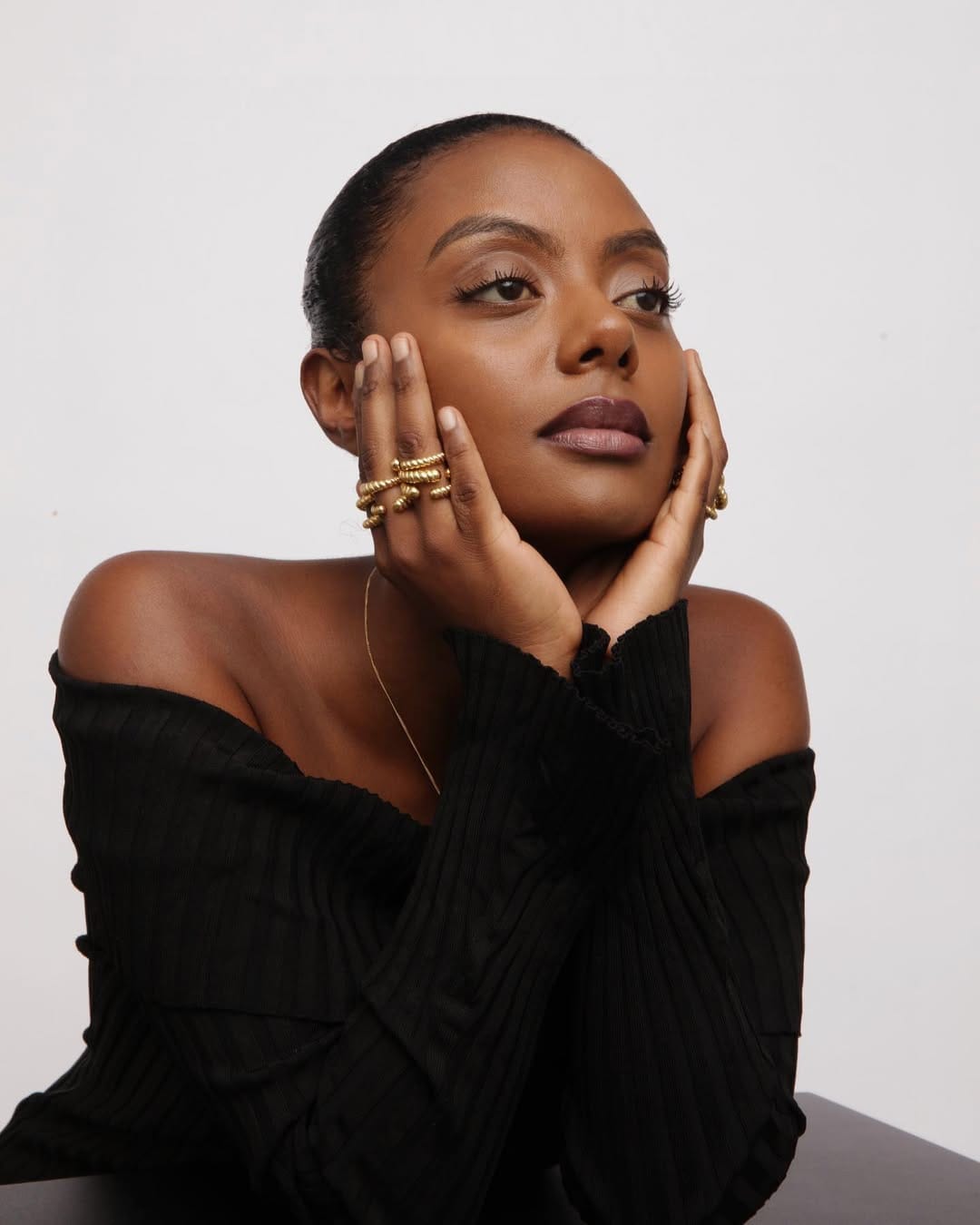
Tell me about your background.
I was raised between Addis Ababa and the U.S., where my early life was shaped by a deep sense of movement between places, languages, and cultures. Growing up, I was always drawn to storytelling. I didn't have the language for it then, but I was fascinated by the ways people remembered, resisted, and rebuilt.
I wouldn’t say I always knew I’d be a filmmaker, but I’ve always known I wanted to honour untold stories, especially those at the intersections, and wanted to do something creative. That passion eventually led me to advocacy and sustainability work, and over time, I began to realise that visual storytelling was one of the most powerful ways to connect policy with people. That’s how I found my way to the work I do now.
You blend social impact with artistry, with storytelling as your main goal. How has your background influenced that, and what was your turning point?
My background is in social impact and political science. I did my undergrad in political science and gender studies, then went on to do a master’s in international law and human rights, focusing on women in conflict, particularly their roles in political negotiations and peacekeeping. I later worked in anti-human trafficking, with a strong focus on labour rights and legislation.
But growing up African, there’s this idea that being an artist isn’t realistic; it’s seen as unstable. You’re pushed toward ‘serious’ careers. And I followed that path: I got the degrees, moved to New York, and worked in humanitarian spaces. I ticked every box, but it still didn’t feel fulfilling.
I began to realise that a lot of the work I was doing, while important, wasn’t reaching the communities it was meant for. These big conversations around social justice often happen within the same circles, speaking to the same audiences. I wanted to reach more people in a way that felt more personal and healing, not just for others, but for myself too, because doing this type of work can also be very draining, especially when you’re living through the very realities you’re trying to challenge. Talking about women’s rights and equity, for example, while also being a person of colour, it’s hard to separate the work from your own lived experiences and internalised trauma. Navigating those spaces becomes deeply personal. That’s when I started getting into photography, not with the intention of building a career, but simply because I enjoyed it. It was an outlet. But over time, I noticed I was naturally drawn to telling stories about my community. It became a way for me to express what I was already advocating for in my professional life, just through a different, more visual and emotional medium.
Eventually, the two paths started to merge. At first, I didn’t even realise what I was doing, I didn’t have a name for it. It was only about two years later that it clicked for me: I could actually build something out of this. I could start a production company, or call myself an artist focused on these kinds of stories.
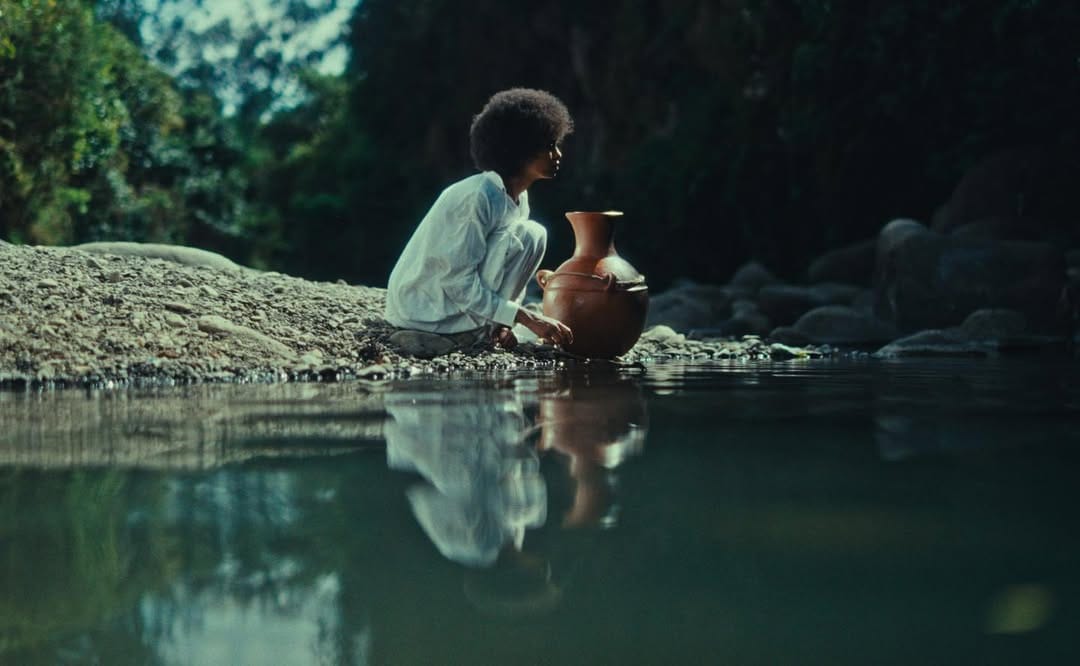
What inspired you to start Chucha Studios, and how have your heritage and your mother’s legacy influenced it?
It all ties back to my “why.” My culture plays a huge role in shaping my perspective and identity as an artist. You can see it in the tones, the colours, and the overall style I gravitate toward. So much of my artistic language is rooted in memory, especially memories from growing up at my grandmother’s house. My set design, in particular, often draws from those deeply personal moments, as well as from my faith. I grew up going to church every Sunday, and I remember how visually rich that experience was; the reds, the blues, the vibrant colour palettes, the symmetry in everything from the architecture to the stained glass. It’s only recently that I’ve realised how much of my visual sensibility comes from those early exposures to colour, structure, and feeling. My heritage and upbringing are at the core of that influence.
And then there’s my mom. She always reminded me that just because something hasn’t been done before, or isn’t widely understood, doesn’t mean it’s impossible. That mindset really shaped the ethos of Chucha Studios. We’re not just a production company, we’re a vehicle for systemic change. You rarely see studios using art this intentionally to engage with social impact, especially in such an in-depth and culturally-rooted way. And right now, it’s hard not to notice how Black art and Black voices are often commodified, used as marketing tools, and then discarded when the trend fades. We’ve seen the support roll back. We’ve seen people disengage. And that's what my production company really aims to have. It's not a choice, and it's part of our ethos and our ways of doing business overall.
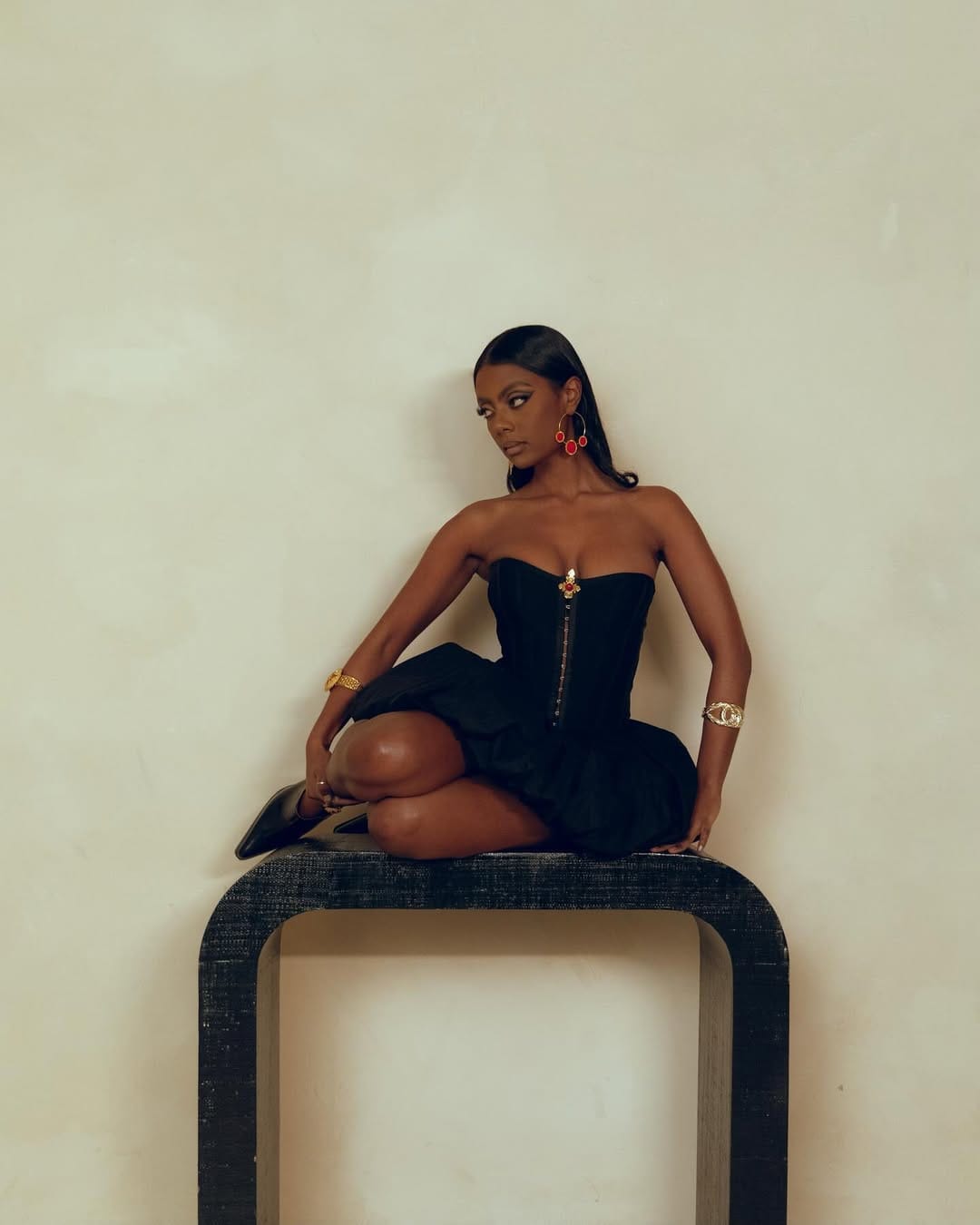
How do you see film contributing to systemic change, especially in how the world views Black people and Africa?
I think film and photography have this unique ability to capture people’s stories without the barriers that often exist in other forms of storytelling. Especially when it comes to advocacy, I’ve found that so many spaces require a certain level of education, status, or the ability to articulate yourself in a way that fits into institutional norms. There’s a kind of elitism that shows up in politics and the social justice world, and it can unintentionally silence the very voices it’s trying to uplift. But art, especially film, creates space for something different. It allows people to be visible, to be their own advocates, and to speak from experience without needing someone else to speak on their behalf. It’s about agency. It’s about visibility. It’s what I often think of as a ‘survivor’s approach to change’ where the people who’ve lived these stories are the ones leading the conversation.
That’s also a big part of my debut film, The River. Produced by Qene Films, we cast and collaborated directly with people who could speak from experience. I could sit behind the lens and be more of a vessel to help people have that platform to share their own voices instead of taking up space.
You just mentioned The River. It touches on themes like water access, beauty, and girlhood in Ethiopia; what, in particular, inspired the project, and what was the most personal aspect for you in creating it?
The inspiration for The River came from a real place, quite literally. There’s a river near my childhood home called Kabenna. Growing up, it held this dual meaning: it was a source of life, of water, but also a place of danger. I remember there being a very strong connotation around it, whenever we went to fetch water or got close to the stream, we had to be cautious. There were real vulnerabilities we faced: kidnappings, gender-based violence. As kids, especially girls, we were never allowed to go alone to the river, the lakes, or even the forest. You just never knew what was going to happen, and there's this disconnect that you have from nature, or a sense of fear that you have from it because of what society has built around it.
That’s why I wanted to tell this story, not just literally, but through a narrative structured around poetry and four distinct scenes. Each scene could stand alone as its own short film, yet together, they form a larger, layered conversation about what it means to be a woman, not just in Ethiopia, but in the global South more broadly.
Clip from The River
What would you say was most personal for you about its creation?
There’s a scene in the film that’s rooted in one of my most personal memories; moments I shared with my mother. She used to play the guitar, and I would go horseback riding with her. So if you’ve seen clips of the little girl with the guitar or the horses in the trailer, those visuals are drawn directly from that memory.
It was also one of the most difficult scenes for me to create emotionally. Growing up, I had recorded a song with her on my phone. After she passed away, that recording meant the world to me; it was like a piece of her that I could still hold onto. But when I was in Ethiopia, someone stole my phone. And I know, to them, it was just a phone, but they didn't realise what they took from me. I didn’t even care about the phone itself. So I think, in a way, I created that scene to give that memory a second life. To make it tangible again, not just for the film but for myself. It was very special to me.
Another one of your projects that speaks to film and photography as agents for change is the Welcome Home series that focuses on Black immigrant experiences. Why was it important for you to tell that story, and how were you able to do it in such a creative medium?
Welcome Home was actually one of my first projects. I released it in 2022, and the idea was to tell stories around what it really looks like to be a Black immigrant. You know, a lot of times when we see immigration covered in the news or on social media, it rarely ever intersects with the Black experience. But the truth is, those two realities are deeply connected. There’s xenophobia, of course, but what happens when the system itself is also systemically racist? People often don’t talk about how Black immigrants are deported at higher rates, largely because Black communities are already policed at higher rates. That connection is there, but it’s ignored or overlooked entirely.
With Welcome Home, I really wanted to shine a light on that, on the experience of being both Black and an immigrant, and also, importantly, on the resilience it takes to carry that identity. I didn’t want it to just be a story about hardship. I wanted to show the strength, the resilience, the incredible will it takes to leave behind everything you know and start over in search of a better life.
Clip from Welcome Home
It's a very important story. Why did you choose to use archival photography?
So with Welcome Home, it's a series that's very dear to me, and I think as an artist, I'm always trying to explore different mediums of art and storytelling. So even with photography, poetry, with my film The River, music, tapping into that a little bit more, event production, I've always been exploring different ways to deliver and show up my work and archiving is something that I've always enjoyed. And I think you two could probably relate to that. You know, sometimes you grow up and you see, like fire images of your great grandparents or your grandparents, and you're like, who took these, like amazing photos that are curated, that were just taken. And I wanted to always explore and intersect working with archival images. And I met Ranata from black archives, and I know she's been wanting to do a little bit more work on touching on black diaspora stories. So that's where we kind of found the middle ground, and the happy medium of her being a huge expert in black archival photography and footage, and then me having the series, and we just kind of collaborated, and made it happen.
How do you decide which stories to tell and when to tell them?
Honestly, it’s all intuitive. I create from identity and memory; my lived experiences and the people around me. The River came from growing up near water. Welcome Home came from being raised by immigrants. These stories are personal.
And I just know when it’s time. It’s a gut thing. What calls me, what feels urgent? That’s what I follow.
What would surprise people about your process and what happens behind the scenes?
That we're all still figuring it out, and the greatest moments often happen by accident. Even with The River, there were scenes we hadn’t planned to shoot, but we did anyway. Especially in post-production, there were so many parts of the film that took a different direction. I wasn’t expecting it to turn out the way it did, but it did.
That’s something I always tell people: of course, have a vision for your art. But when you’re working with a team, a talented group of artists, there are so many ways your work can be interpreted. Don’t be afraid to shift from your original idea. Being open to feedback and other people’s input can really help shape and build your story.
At the same time, it’s important to know when to trust your gut and stand by what feels right to you.
How do you make sure your collaborators and communities feel seen and respected?
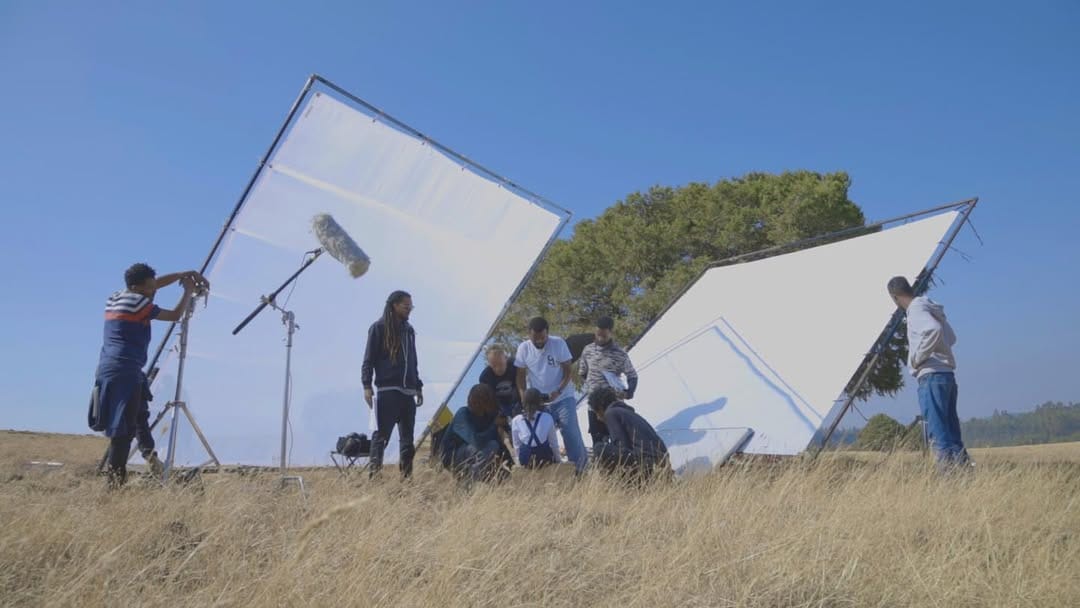
Yeah, I think one way is, as I mentioned, I want everybody to feel proud of what they're working on. Whether you're in front of the scene or behind it, I want everyone to feel like they’ve put in their best and are proud of the work being put out overall.
I think transparency and just trying to be open within my process is something I really try to practice. I’m not perfect, but it’s something I’m mindful of, especially as a director. Hearing everybody’s voices matters. And respect is a big one.
A lot of people underestimate how disrespectful things can get on set. There’s this hierarchy, and the way people speak to each other can be wild sometimes.
That’s something I really try to be conscious of. Production can be super stressful; things move fast, you’re racing against the light, producers are yelling, and it can easily become chaotic. People start talking to you crazy, if I’m being honest. But no matter how much pressure I’m under, I never want to normalise that kind of behaviour. How you treat people, how you speak to them, that matters. And unfortunately, that kind of treatment has been way too normalised in the film world.
I think that's very important to note. Speaking of the wider community. How have they responded to some of your projects?
I think overall, thankfully, it’s been good. But of course, there’s always criticism. Especially when I go back home, I get a little nervous. Like, I can speak my native language really well, but I can’t always hold a full professional conversation in it. And I think people sometimes nitpick at stuff like that, just to find a flaw. That’s something you have to learn to navigate. There will always be people doing absolutely nothing who will still tell you you’re doing absolutely everything wrong.
Learning to cancel that noise out is important, but also understanding where people are coming from is a balance. With Chucha Studios and the kind of work I do, I don’t have the privilege of ignoring certain things. I can’t just say, “Oh, it’s just art.”
When you commit to telling stories that are about change, about community, you have to hold yourself to a higher standard. You owe that to the people you’re representing. And I think that’s both the gift and the curse of the work I do.
You also model, direct, and recently had your first portrait painted. How do you balance all these creative outlets?
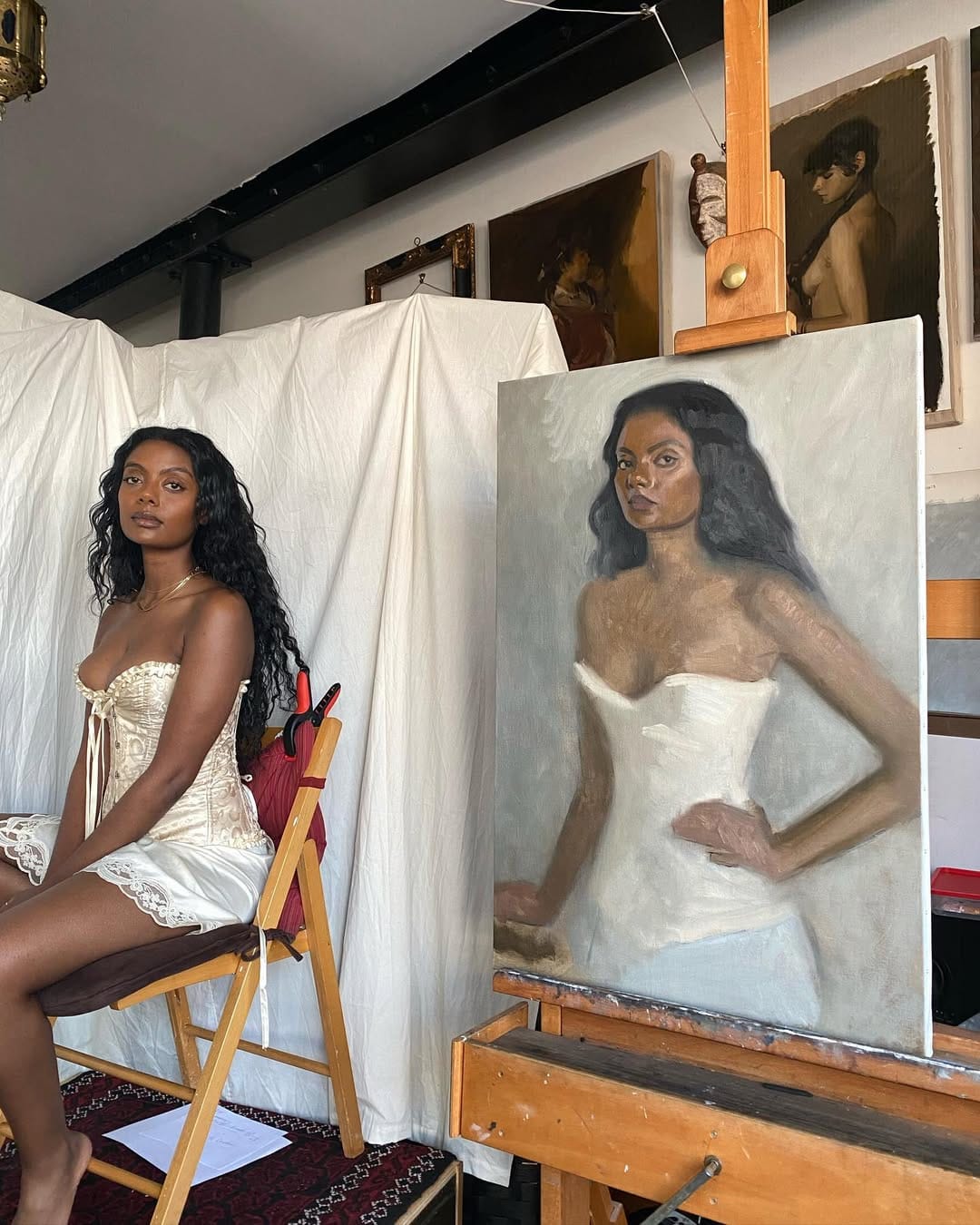
Yes, for the portrait, actually, it was Jas who painted it. He’s a painter, and it was the first time someone painted a portrait of me. It was really nice to be a muse for him.
Overall, I try not to separate out a lot of my work. Sometimes things naturally intertwine. Even with modelling, I see it as something I do for myself, a way to document myself. Not just always being behind the lens, but also expressing myself and my artistry from within. It’s something I hold really personally.
Modelling is actually what made me fall in love with film. Just being outside, on set, meeting so many amazing photographers, videographers, and creatives, became my toolbox for learning about the industry. Understanding what people do, how sets work. I always say modelling was my school, it taught me a lot about being a director and creative director as well.
What’s next for you and Chucha Studios?
We’re still submitting The River to film festivals, so fingers crossed for more screenings. I’m also working on an exciting project on the continent this fall, and I’m writing the script for my next film. It’s a lot of behind-the-scenes work right now, but I’m excited for what’s coming.
I’m excited as well. Thank you for speaking with me.

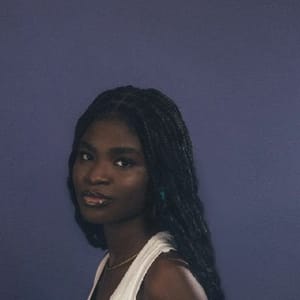
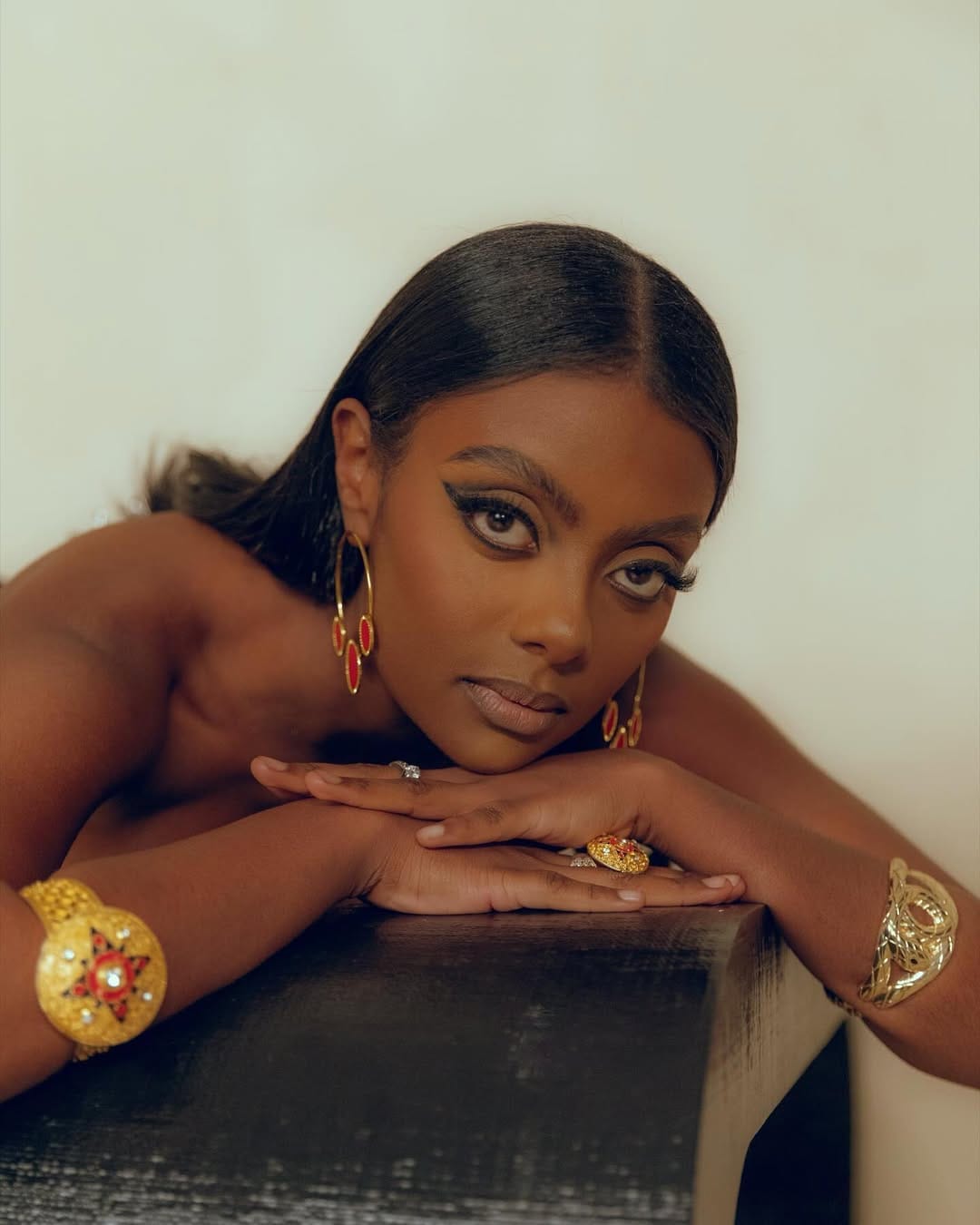


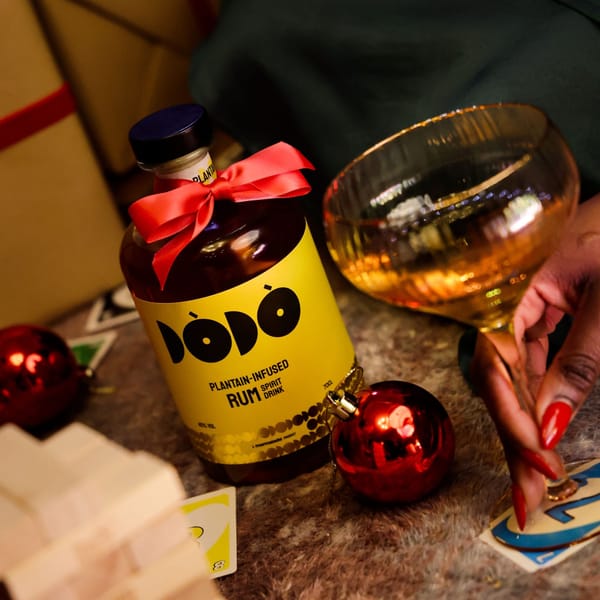
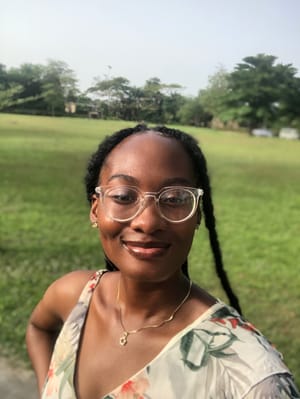
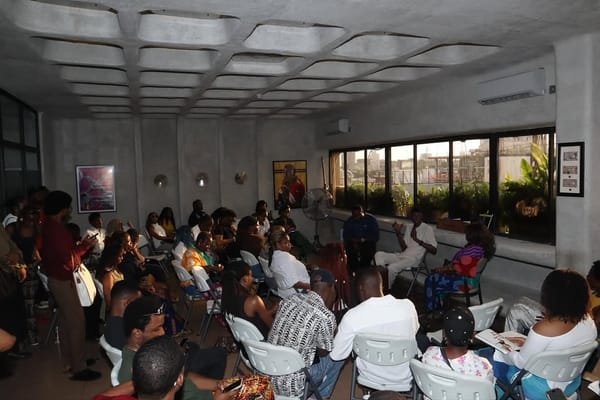
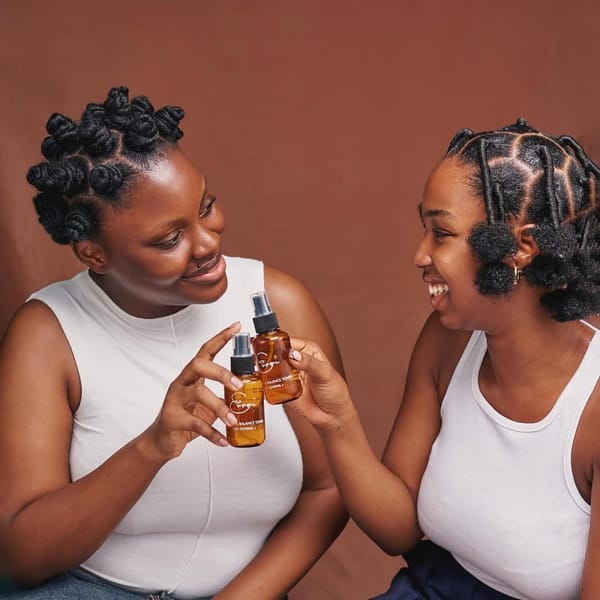
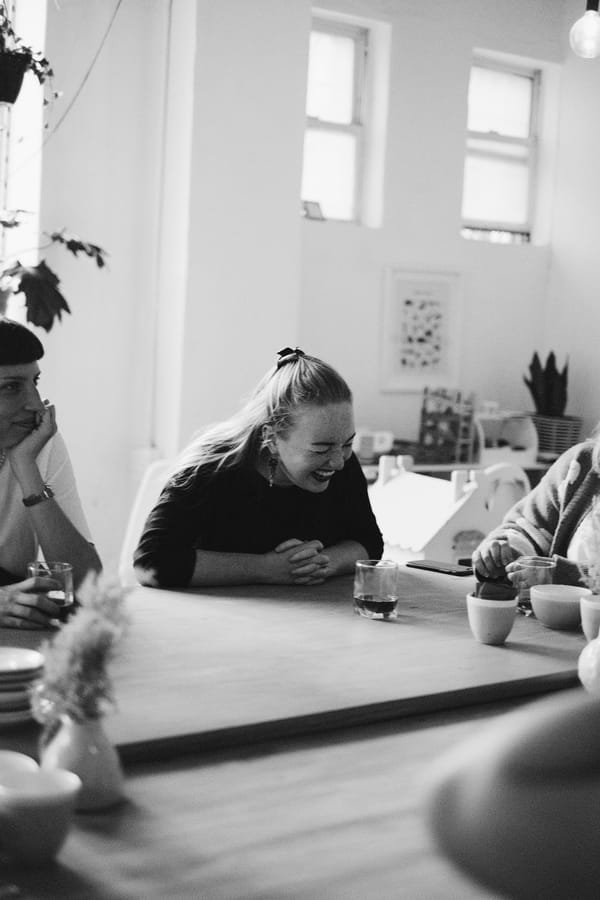
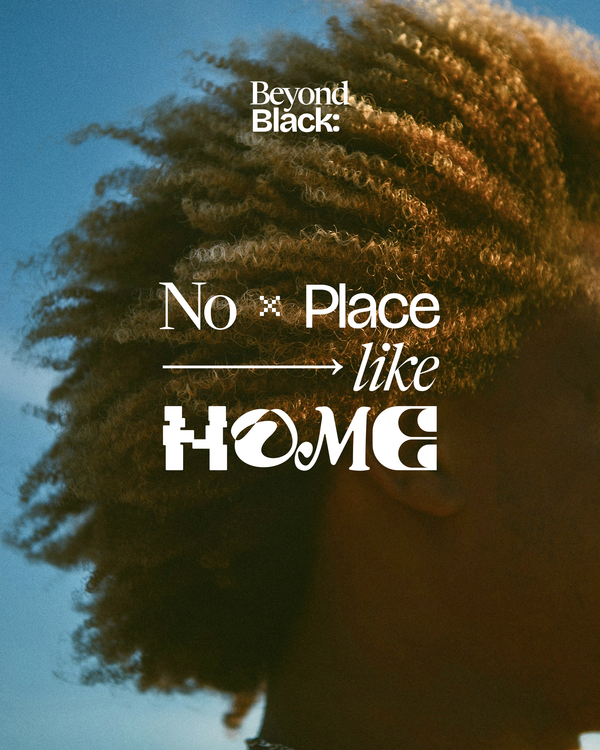
Member discussion